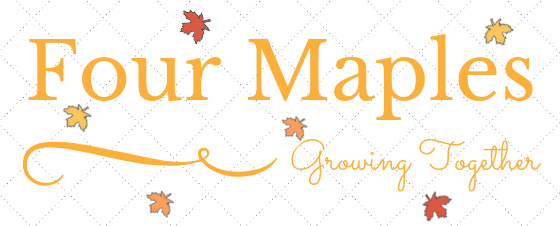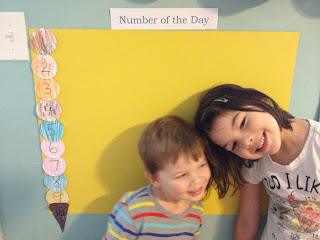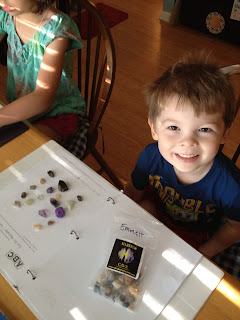Number of the Day Chart: Using an ice cream cone template to keep track of our progress and practice skip counting once the chart is completed
There are several suggested activities in our curriculum, including:
- Finding ___ of something in the house (for at least first 10 numbers)
- Measuring a line ___ inches long
- Practicing simple word problems using the number of the day (ex. If I baked seven cookies and gave three to Miss Anita next door, how many would I have left?").
We have also incorporated a few more ideas:
- Number of the Day exercises on wiggly days (ex. "Do 9 toe touches! Let's do 9 bunny hops!")
- A math game for practicing addition combinations: put ___ marshmallows (nuts, raisins, cheerios, whatever) in a plastic sandwich bag with a line drawn down the center of the bag. Have the child group all of the marshmallows on one side of the bag, then move them one by one to the other side of the line, writing down the numbers of marshmallows on either side (ex. 6 marshmallows = 3+3, 4+2, 5+1). (Source: Heart of Dakota)
- Build a house with ___ of each kind of block (ex. 4 windows, 4 flat blocks, 4 triangles, etc)
- Draw a hopscotch grid with ___ of squares to jump on (I am imagining an epic hopscotch competition on Day 100!). You could practice skip counting by 2s, only jumping on the even numbers
- Go outside and look for ___ insects/rocks/flowers/fall leaves/acorns/etc. You can even make it into a word problem: "We have found 4 red leaves and 3 yellow leaves. How many is that? How many more do we need to find?"
Happy counting!




























